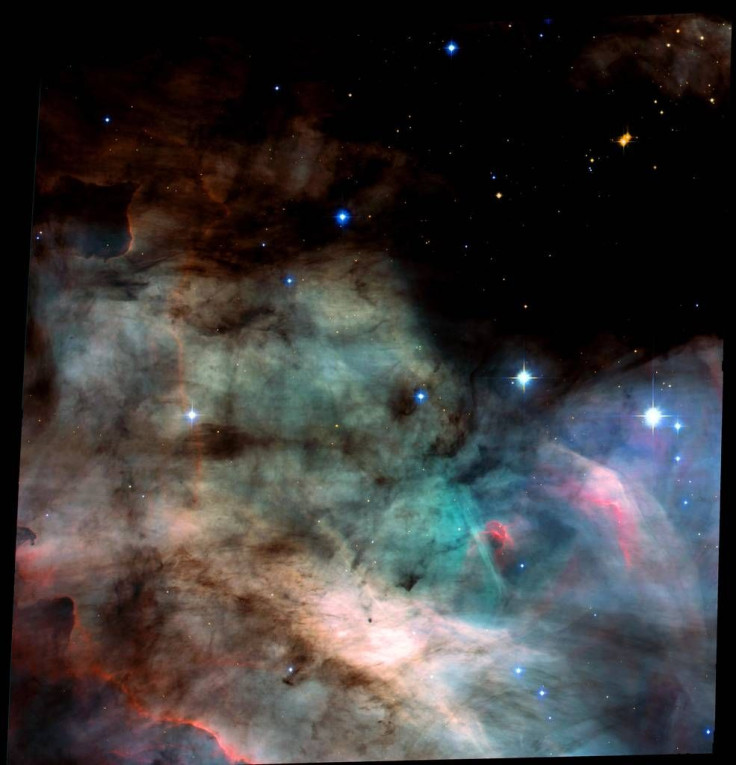NASA Snaps Stunning Photo Of Swan Nebula: Glowing Lake Of Hydrogen, Oxygen, Sulfur Gas

NASA’s Chandra X-ray Observatory was able to capture a stunning photo of the Swan Nebula. It is known as one of the largest star-forming regions in the Milky Way galaxy.
According to the space agency, Chandra is currently focused on studying a nova region within the Sagittarius constellation. Due to the various chemical elements present within the region, it appears like a very colorful cloud composed of sulfur, oxygen and hydrogen.
“This hotbed of star formation is colored according to the chemical elements present,” NASA said in a statement. “Red represents sulfur, green indicates hydrogen and blue represents oxygen.”
The nova region lies with the stunning Omega Nebula or Swan Nebula. Located about 5,500 light-years from Earth, this cosmic region is illuminated by the ultraviolet radiation emitted by the massive young stars in the area.
Right #now Chandra is studying a nova in #Sagittarius! Nearby in the sky is the graceful Swan Nebula. About 5,500 light years from Earth, the Swan is a glowing lake of hydrogen, oxygen, and sulfur gas. It's one of the brightest star-forming regions in our galaxy! pic.twitter.com/nVzx7gX4S3
— Chandra Observatory (@chandraxray) September 3, 2019
According to NASA, the nebula has an apparent magnitude of 6, which makes it bright enough to be spotted using a pair of binoculars. The agency said the nebula can be best viewed during clear nights in August.
Similar to the nova region, the Swan Nebula is also highlighted by the colors of the various chemicals in the area.
According to NASA, the Swan Nebula, also known as the M17, houses some of the youngest stars in the galaxy.
“M17 contains one of our galaxy’s youngest star clusters, at only 1 million years old,” NASA said in a statement. “However, many of the young stars in this cluster are impossible to see because of the gas and dust that surrounds them.”
The agency noted that these young stars are capable of emitting blasts of radiation that are powerful enough to erode their surrounding gas clouds.
“The powerful radiation from the young star evaporates and erodes the dense clouds of cold gas in which new stars form,” NASA explained. “One such pocket of gas is seen at the center of the brightest region of the nebula and is about 10 times larger than our Solar System.”
“Other dense pockets of gas have formed the remarkable dark features jutting inward from the bottom left corner of the image,” the agency added.
© Copyright IBTimes 2024. All rights reserved.




















